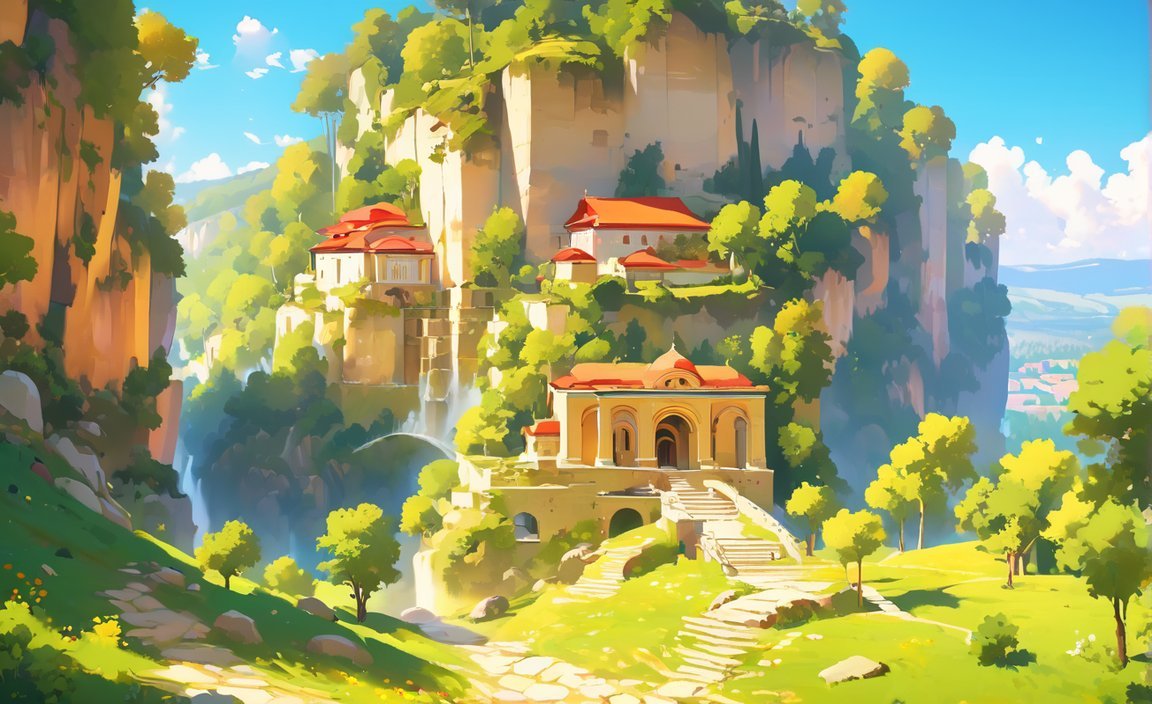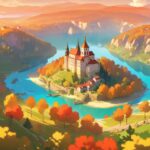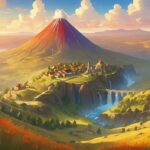Discover Fascinating Fun Facts About Serbia’s Hidden Gems. Serbia, a captivating country nestled in the heart of the Balkans, is not only rich in history and natural beauty, but also teeming with hidden gems waiting to be explored. From its ancient monasteries and charming villages to its vibrant culture and warm hospitality, Serbia offers a treasure trove of unique experiences for the intrepid traveler. In this article, we will uncover some intriguing fun facts about Serbia, shedding light on its lesser-known facets that make it a true hidden gem worth discovering.
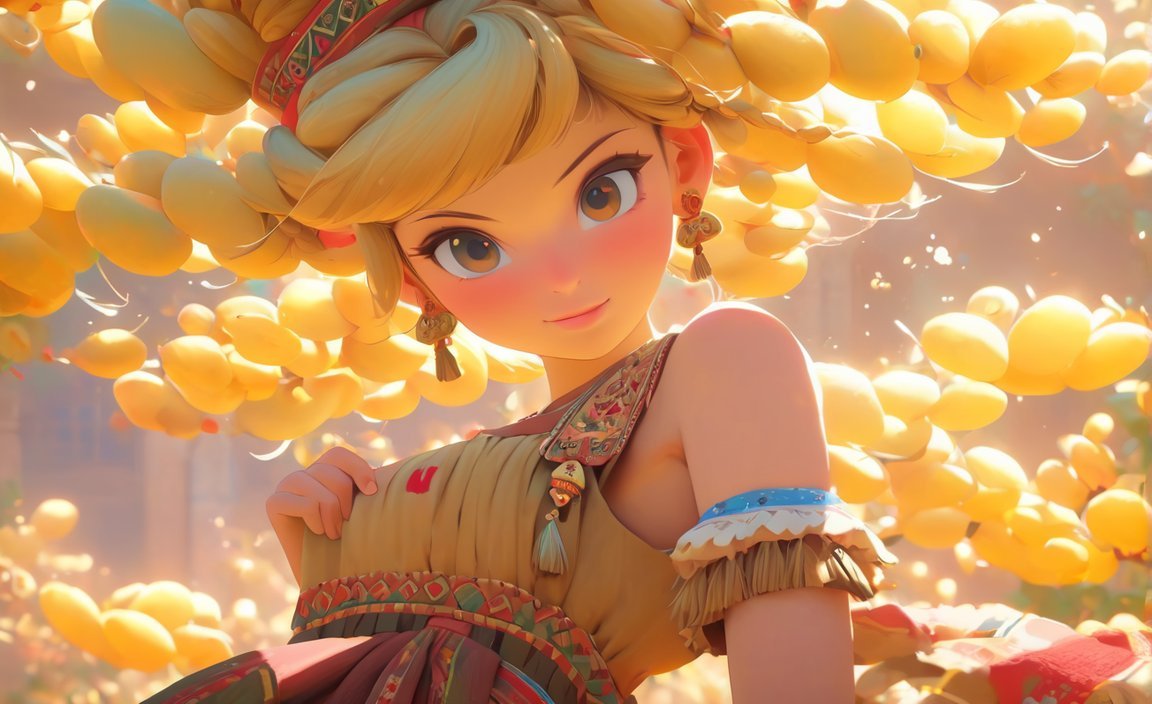
Key Takeaways:
- Serbia is a landlocked country in Southeastern Europe that was once part of Yugoslavia.
- Serbia is the birthplace of 18 Roman emperors, the most of any country outside Italy.
- Serbia is the largest exporter of raspberries in the world, producing almost 95% of the global supply in 2012.
- The word “vampire” originates from the Serbian word “vampir.”
- Gostusa, a stone village in Serbia, is known for its houses made entirely of stone.
- The Djerdap Gorge, also known as the Iron Gate, is Europe’s largest gorge and is located in Serbia.
- Nikola Tesla, a renowned scientist and inventor, was born in Serbia.
These fun facts highlight Serbia’s rich heritage, cultural contributions, and natural wonders, making it a fascinating destination to explore.
Fun Facts About Serbia
Serbia, a landlocked country in Southeastern Europe, is a treasure trove of fascinating facts that reveal its rich heritage, cultural contributions, and natural wonders. Let’s dive into some intriguing fun facts that make Serbia a truly unique destination.
The Birthplace of Roman Emperors
Did you know that Serbia is the birthplace of 18 Roman emperors? That’s more Roman emperors than any other country outside of Italy! These emperors played a significant role in shaping ancient Rome’s history and left a lasting legacy that still resonates today. Serbia’s connection to the Roman Empire is a testament to its historical and cultural importance.
Raspberry Capital of the World
Serbia occupies a sweet spot in the global agricultural landscape as the largest exporter of raspberries globally. In fact, Serbia accounted for almost 95% of the world’s raspberry production in 2012! So, if you’re a fan of this juicy fruit, Serbia should be on your radar for its agricultural prowess.
The Origin of Vampires
Prepare to be intrigued: the word “vampire” has its roots in Serbia! It originated from the Serbian word “vampir.” Legends and folklore surrounding vampires have captivated our imaginations for centuries, and Serbia’s contribution to this supernatural lore adds a certain mystique to the country’s cultural heritage.
Gostusa: The Stone Village
In Serbia, you’ll discover an architectural marvel called Gostusa, a stone village where houses are crafted entirely out of stone, from roofs to doors and windows. This unique village stands as a testament to Serbia’s architectural ingenuity, showcasing a captivating blend of tradition and craftsmanship.
Djerdap Gorge: Europe’s Great Wonder
One of Europe’s greatest natural wonders can be found in Serbia – the Djerdap Gorge, also known as the Iron Gate. This majestic gorge is the largest in Europe and offers breathtaking scenery, with its dramatic cliffs and winding Danube River. Exploring this impressive natural marvel is a must for any nature enthusiast visiting Serbia.
Nikola Tesla: A Scientific Icon
Serbia takes great pride in being the birthplace of one of the most influential scientists and inventors of all time – Nikola Tesla. Tesla’s groundbreaking contributions to the fields of electricity and magnetism have left an indelible mark on the world. Visiting Serbia offers a chance to delve into the life and achievements of this great scientific mind.
These fun facts about Serbia provide a glimpse into the country’s vibrant traditions, architectural uniqueness, and captivating history. From its connection to ancient Rome to its agricultural prowess, Serbia reveals itself as a destination worth exploring for its fascinating contributions to European culture.
So, are you ready to embark on a journey of discovery through Serbia’s hidden gems? Join us as we unravel the captivating allure and abundant wonders that this captivating country has to offer.
Here are some captivating Fun Facts on Silver that you won’t believe! Did you know that silver is one of the most reflective metals? Discover more intriguing facts about silver here!
Explore some mind-blowing Facts about Vatican City and uncover its fascinating history and rich cultural heritage. Check out these incredible facts here!
Did you know that Antarctica is the world’s largest desert? Dive into the world of fascinating facts about Antarctica and explore its unique wonders here!
India, a land of diverse cultures and traditions, has some really fascinating facts to offer. Delve into the captivating world of facts about India and be amazed here!
Discover the hidden treasures of Albania through these intriguing facts that will surprise you. Unveil the secrets of Albania here!
The Serbian Cuisine: A Fusion of Eastern and Western Influences
Serbia’s culinary scene is a fascinating melting pot of Eastern and Western influences, resulting in a unique and flavorful cuisine. From hearty meats and fresh vegetables to delectable pastries and desserts, Serbian food offers a delightful blend of flavors and traditions influenced by centuries of cultural contact and exchange.
A Blend of Cultures: Eastern and Western Influences
The Serbian cuisine is the product of centuries of cultural contact and influence from various empires and neighboring countries. Serbia’s location in the Balkan region has made it a fertile ground for blending different culinary traditions. With its geographic position bridging the East and the West, Serbian food has absorbed elements from Greek, Byzantine, and Ottoman cuisines, as well as those of its Balkan neighbors.
Rich Gastronomy: From Meats to Pastries
One of the defining characteristics of Serbian cuisine is its rich and diverse gastronomy. Animal products play a significant role in traditional Serbian food, with an emphasis on rich meats such as lamb, pork, and beef. These meats are often prepared as hearty stews, grilled delicacies, or slowly cooked for tender and flavorful results.
In addition to meats, basic grains like corn, wheat, and oats are staples in Serbian cuisine. These grains are used to make traditional breads, pastries, and desserts that are an essential part of the Serbian culinary experience. Freshly baked breads, mouthwatering pastries, and delightful desserts add a unique touch to Serbian meals.
Seasonality: Embracing Nature’s Bounty
Serbian cuisine is deeply connected to the rhythm of the seasons, with specific dishes associated with each time of the year. Locally sourced, fresh ingredients are foundational to Serbian cooking, and seasonal produce takes center stage in many traditional dishes. From the first ripe fruits of summer to the hearty winter comfort foods, Serbian cuisine celebrates the flavors and abundance of each season.
Homemade Tradition: From Scratch to Table
Food preparation is a cherished aspect of Serbian family tradition. Many foods that are commonly bought in the West are often made at home in Serbia, allowing families to showcase their culinary skills and pass down treasured recipes through generations. The process of making traditional dishes from scratch is a labor of love that adds an extra layer of flavor and authenticity to Serbian meals.
Favorite Dishes: A Gastronomic Adventure
Serbian cuisine boasts a wide array of delicious dishes that are celebrated both locally and internationally. Some popular national dishes include:
- Sarma: Cabbage leaves stuffed with a flavorful mixture of meat and rice.
- Gibanica: A savory pastry made with layers of filo dough and various fillings, such as cheese, spinach, or meat.
- Pljeskavica: A grilled patty made from a mixture of ground meats, typically served in a bun.
- Ćevapi: Grilled sausages made from a blend of minced meats, usually served with bread and condiments.
- Paprikaš: A hearty stew made with meat, vegetables, and spices, often featuring paprika as a star ingredient.
- Gulaš: A delicious meat stew cooked slowly with an array of vegetables and aromatic spices.
- Karađorđeva šnicla: Breaded and stuffed pork or veal cutlets, typically filled with cheese and ham.
Key Takeaways:
- Serbian cuisine combines Eastern and Western influences, resulting in a unique and flavorful gastronomic experience.
- Rich meats, fresh vegetables, breads, cheese, pastries, and desserts are key components of Serbian food.
- Seasonal ingredients play a vital role in Serbian cuisine, with dishes reflecting the abundance of each season.
- Serbian families have a strong tradition of making homemade dishes, showcasing their culinary skills and preserving treasured recipes.
- Popular Serbian dishes include sarma, gibanica, pljeskavica, ćevapi, paprikaš, gulaš, and Karađorđeva šnicla.
Sources:
– Wikipedia
– Serbia.com
Serbia is famous for its traditional folk dances and music, including the energetic kolo dance.
Serbia is a country brimming with cultural treasures, and one of its most acclaimed aspects is its traditional folk dances and music. In this article, we will delve into the enchanting world of Serbian traditional dances, with a special focus on the energetic and iconic kolo dance. Get ready to discover the rich history, UNESCO recognition, popular Serbian folk dances, and the artistic expression behind these captivating traditions.
The Significance of Kolo Dance
- Kolo is a traditional South Slavic circle dance that can be found not only in Serbia but also in Bosnia and Herzegovina, and Croatia.
- It is a dance performed by a group of dancers interlinked to form a chain, usually moving in a synchronized circular line while holding hands.
- The kolo dance holds cultural and social significance as it was performed during various occasions such as weddings, festivals, religious ceremonies, and communal gatherings.
UNESCO Recognition
- The kolo dance has received UNESCO recognition as it is inscribed on the UNESCO List of Intangible Cultural Heritage for Serbia.
- UNESCO acknowledges the kolo dance as an essential element of Serbian cultural heritage, representing the country’s history, tradition, and community spirit.
Popular Serbian Folk Dances
- Apart from the kolo, there are several other traditional folk dances celebrated in Serbia.
- Žikino Kolo and Moravac are among the most popular dances, each with their unique styles and regional characteristics.
- These dances are often performed during festive occasions, bringing people together to showcase their cultural pride and unity.
Cultural Heritage and Artistic Expression
- Serbian folk dances are more than mere rituals; they are a form of artistic expression and storytelling.
- These dances reflect the historical narratives, migration patterns, and cultural diversity that have shaped Serbia.
- The colorful costumes, intricate footwork, and vibrant music of these dances convey a sense of collective identity and pride.
Serbian Folk Music
- Alongside the traditional folk dances, Serbian music plays a significant role in capturing the cultural essence of the country.
- Traditional folk songs, known as “narodne pesme,” have been passed down through generations, highlighting the richness of Serbian musical heritage.
- The music ranges from hauntingly beautiful melodies to lively and energetic tunes, showcasing the diverse influences and historical events that have shaped Serbian music.
Key Takeaways:
- Serbia boasts a rich repertoire of traditional folk dances, with the kolo dance standing out as one of the most iconic and energetic.
- The kolo dance holds cultural and social significance and has been recognized by UNESCO as intangible cultural heritage.
- Besides the kolo, Žikino Kolo and Moravac are popular folk dances in Serbia.
- Serbian folk dances are not only rituals but also a form of artistic expression and storytelling.
- Traditional folk music, known as “narodne pesme,” accompanies the dances and adds to the cultural vibrancy of Serbia.
Suggested Sources:
Serbia’s Rich History of Producing Notable Scientists, Artists, and Athletes
Serbia, a country steeped in history and culture, boasts a remarkable track record of producing exceptional individuals in the fields of science, art, and athletics. From groundbreaking discoveries to masterful creations and awe-inspiring performances, Serbia has made its mark on the world stage. Join me as we delve into the unique individuals and their remarkable contributions that have shaped Serbia’s rich history.
Notable Scientists
Serbia has been a breeding ground for brilliant minds in the scientific realm. Some of the notable scientists hailing from Serbia are:
- Nikola Tesla – Known as one of the greatest inventors and visionaries of all time, Nikola Tesla was born in Serbia. His groundbreaking work in the field of electrical engineering and contributions to alternating current (AC) power systems revolutionized the world.
- Mihajlo Pupin – A renowned physicist and inventor, Mihajlo Pupin made significant advancements in telecommunications. His work on long-distance telephone communication paved the way for modern communication systems.
Notable Artists
Serbia’s artistic flair has flourished throughout history, giving rise to renowned artists who have left an indelible mark on the world. Here are some extraordinary artists from Serbia:
- Marina Abramović – A world-renowned performance artist, Marina Abramović has pushed the boundaries of art through her captivating and thought-provoking performances that explore the limits of the human body and mind.
- Paja Jovanović – Celebrated for his engrossing realist paintings, Paja Jovanović is considered one of Serbia’s most influential artists. His masterpieces vividly depict historical events, cultural aspects, and notable figures.
Notable Athletes
Serbia’s sporting prowess is well-known globally, with its athletes achieving remarkable feats in various disciplines. Let’s explore some extraordinary athletes from Serbia:
- Novak Djokovic – Widely regarded as one of the greatest tennis players in history, Novak Djokovic has dominated the tennis world, winning numerous Grand Slam titles and breaking records along the way.
- Ana Ivanovic – A former professional tennis player, Ana Ivanovic achieved great success, reaching the top ranking in women’s tennis and winning the prestigious French Open in 2008.
Key Takeaways:
- Serbia has been the birthplace of exceptional scientists, artists, and athletes who have left an indelible mark on their respective fields.
- Nikola Tesla, a Serbian inventor, revolutionized the world of electricity with his groundbreaking discoveries.
- Mihajlo Pupin’s contributions to telecommunications have paved the way for modern communication systems.
- Marina Abramović, a world-renowned performance artist, has pushed the boundaries of art and captivated audiences worldwide.
- Paja Jovanović, a celebrated realist painter, depicted historical events and cultural aspects through his captivating artworks.
- Novak Djokovic’s dominance in tennis and numerous Grand Slam wins have solidified his place as one of the greatest players in history.
- Ana Ivanovic’s success in professional tennis, including winning the French Open, has made her a prominent figure in the sport.
Sources:
– BBC: Serbia: A rich History and Culture
– Facts.net: 30 Facts about Serbia
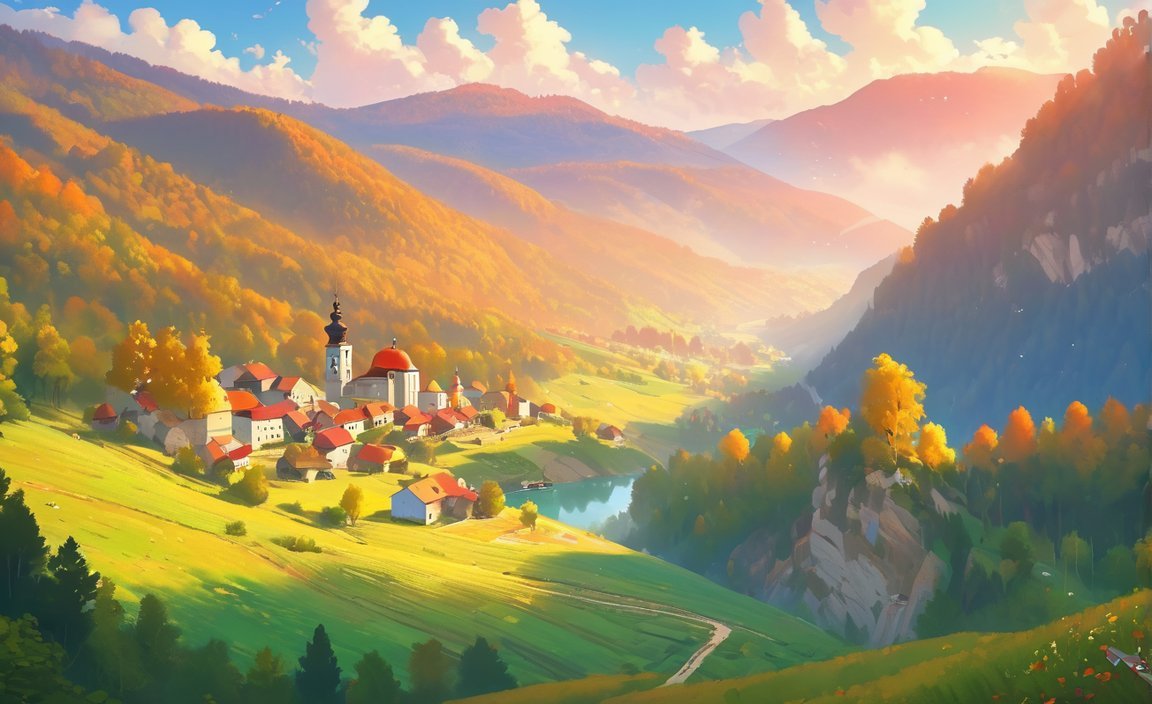
FAQ
Q1: What are some interesting facts about Serbia?
A1: Serbia has several interesting facts, including being known as the birthplace of 18 Roman emperors, being the largest exporter of raspberries in the world, and having a stone village called Gostusa where the houses are made entirely of stone.
Q2: Where is the largest gorge in Europe located?
A2: The largest gorge in Europe, known as the Djerdap Gorge or the Iron Gate, is located in Serbia.
Q3: Who is Nikola Tesla and what is his connection to Serbia?
A3: Nikola Tesla, one of the most influential scientists and inventors of all time, was born in Serbia. He made significant contributions to the fields of electricity and magnetism.
Q4: What is the origin of the word “vampire”?
A4: The word “vampire” originates from the Serbian word “vampir.”
Q5: What are some popular dishes in Serbian cuisine?
A5: Some popular dishes in Serbian cuisine include sarma, gibanica, pljeskavica, ćevapi, paprikaš, gulaš, and Karađorđeva šnicla.
- Unraveling Einstein’s Legacy: Who Inherited His Genius? - July 14, 2025
- Unlock Einstein’s Family Tree: Bernhard Caesar & Untold Stories - July 14, 2025
- Unveiling Bernhard Caesar Einstein: His Life & Albert Einstein’s Legacy - July 14, 2025
